Manduca quinquemaculata
The first time I saw one of these mowing through a leaf like I attack a chocolate bar, I couldn’t believe the size of it.
The presence of a horn on the back end of the green and white caterpillar only added to the alien look of the creature.
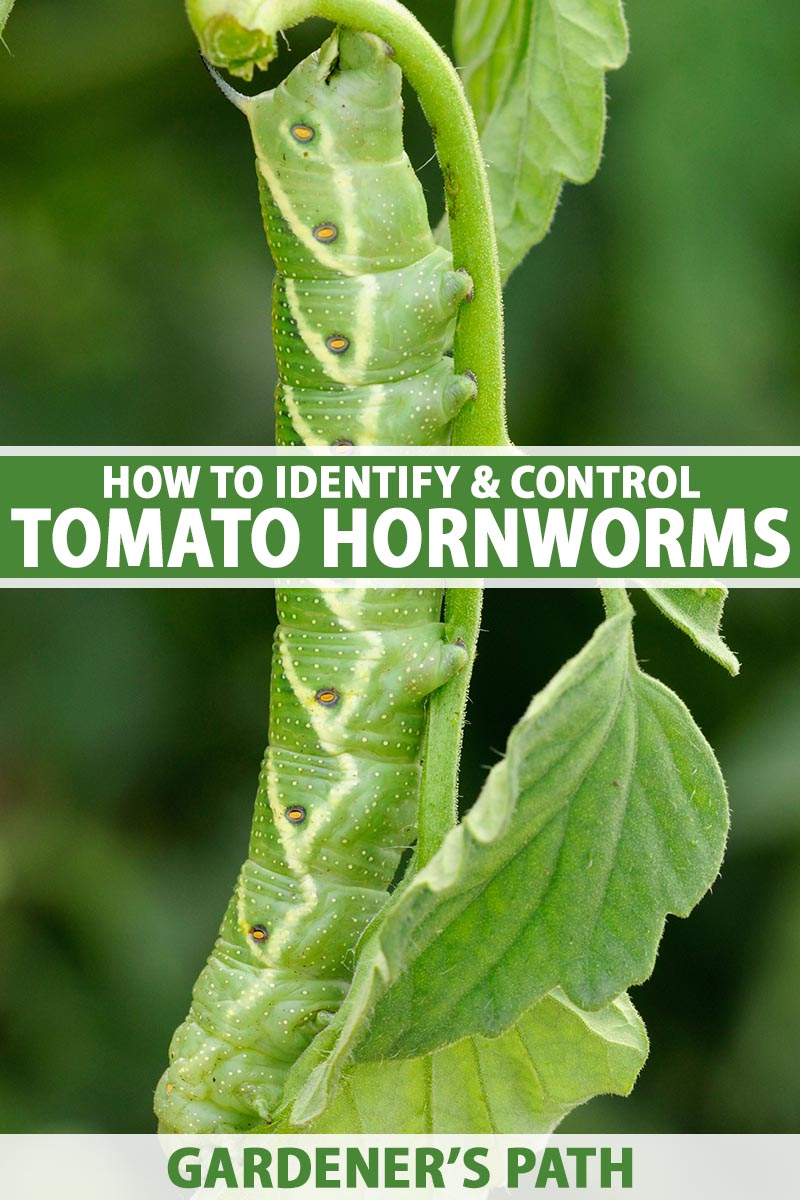
We link to vendors to help you find relevant products. If you buy from one of our links, we may earn a commission.
As strangely beautiful as they are, they are also a menace to tomatoes and other solanaceous crops, hungry enough to eat multiple leaves on a trip around your plant.
How can you deal with these chubby, bold defoliators? Everything you need to know about these bottomless stomachs is laid out for you below!
Here’s what we’ll cover:
What You’ll Learn
What Are Tomato Hornworms?
As their name suggests, the larvae of these insects like tomatoes, and other solanaceous plants such as potatoes, eggplant, and peppers. Plus, the larvae have a horn on the back end of their bodies.
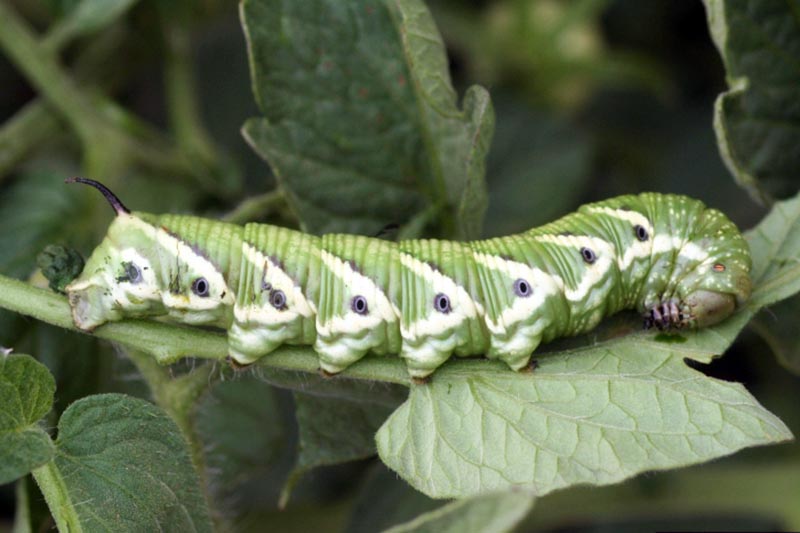
The adult moths are also known as five-spotted hawk moths or sphinx moths.
They have a wide distribution within North America and can be found from northern Mexico to southern Canada.
The moths are not pests, and they simply feed on nectar. Both larvae and adults are most active at night.
The larvae grow to their massive bulk by defoliating from the top of the plant down, and sometimes even chewing on green fruit. They leave large black or dark brown droppings known as frass all over the plant.
Identification of Five-Spotted Hawk Moths
The adult moths are big fellas, with a four- to five-inch wingspan. The forewings are mottled gray brown, and the hind wings have alternating light and dark bands. Their abdomens are lined with five yellow spots on each side.
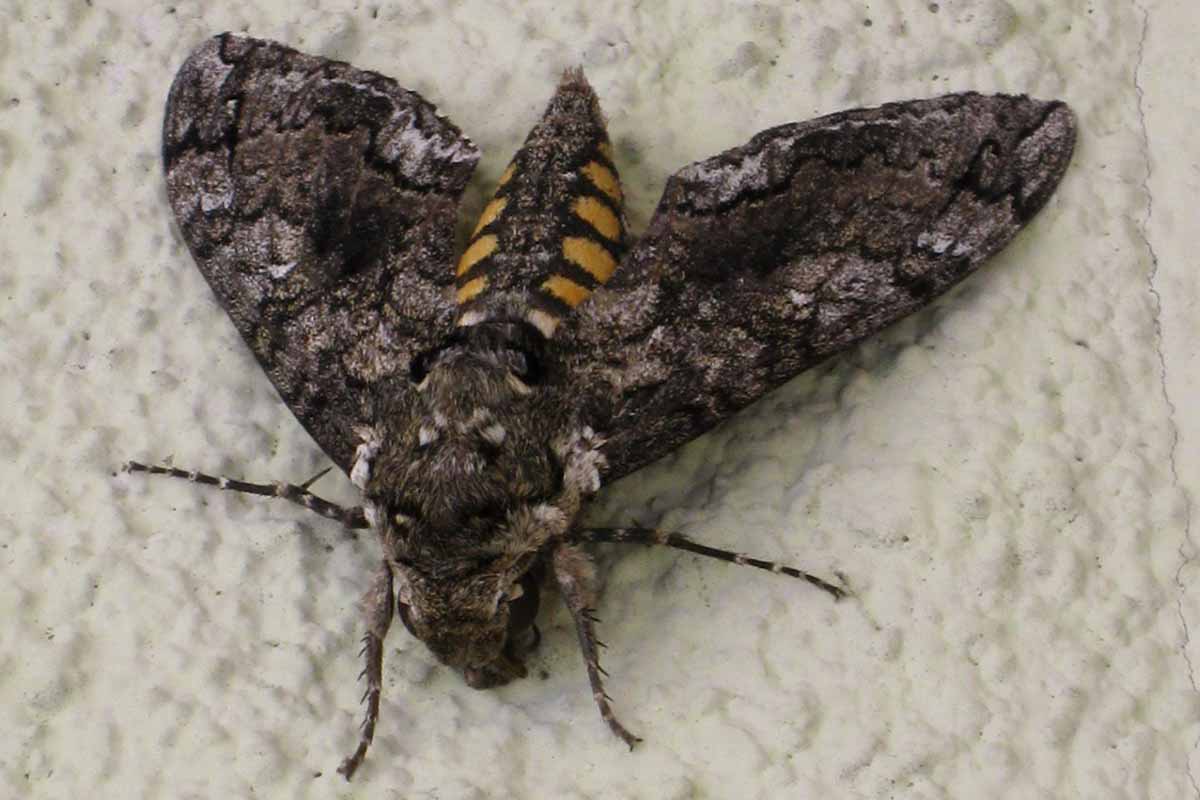
The larvae also become large, growing up to four inches long. They have eight white V-shaped markings along each side, and a distinguishing black horn on the last abdominal segment.
Pupae are dark red brown with a loop on one end which houses the future adult moth’s nectar-sucking mouthparts.
These insects can easily be confused with the tobacco hornworm (Manduca sexta), and they are often paired together on pest information sheets.
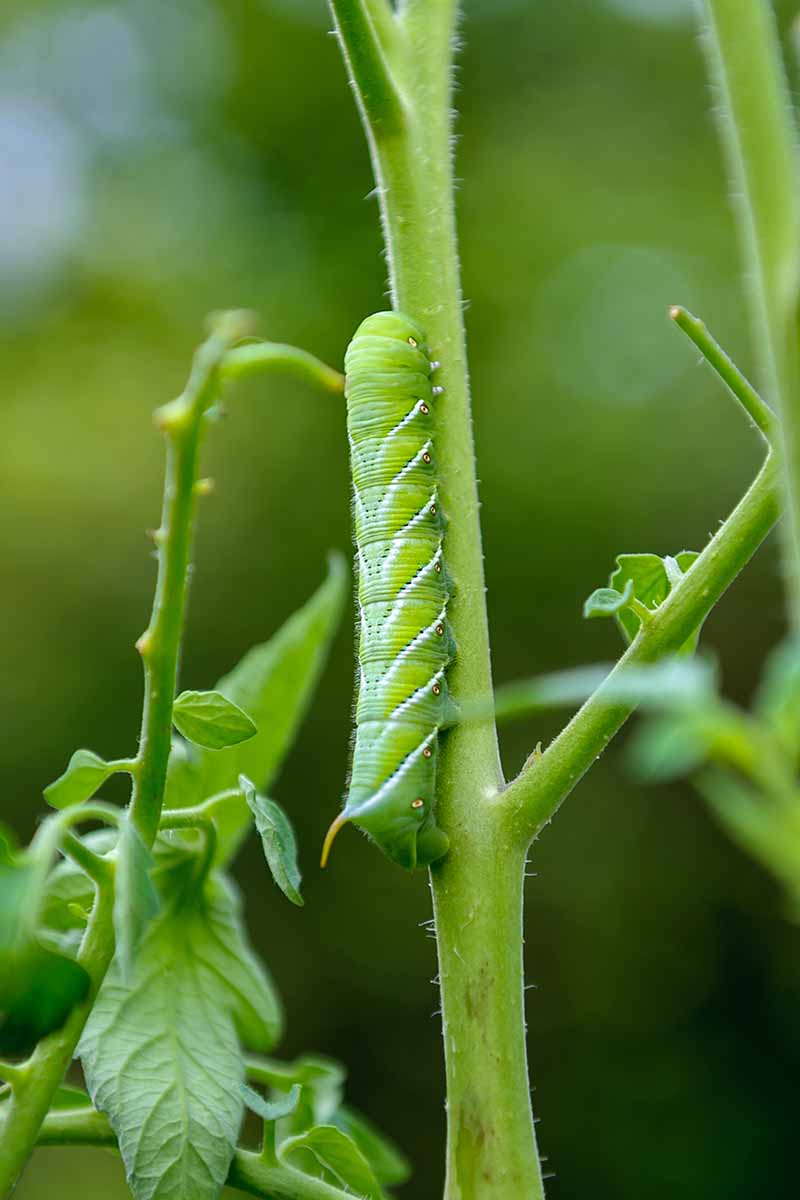
The tobacco hornworm caterpillar, however, has diagonal white lines on its sides, and a reddish colored horn on the last abdominal segment. The adults have six yellow spots on each side of the abdomen, not five like M. quinquemaculata.
Tomato Horn Worm Biology and Life Cycle
These sizable pests finish two generations per season, overwintering as pupae and emerging in the spring as adult moths.
Females lay eggs on leaf surfaces, where the caterpillars will begin to feed once they’ve hatched.
Caterpillars feed and grow quickly, reaching their maximum size in three to four weeks, at which point they drop off the plant to pupate in the soil.
The second generation emerge as adults in midsummer, when your tomatoes are growing happily. They deposit their eggs on solanaceous plants, preferring tomatoes over all others.
The caterpillars feed until late summer or early fall before pupating for the winter.
Monitoring
These caterpillars blend in well with the foliage they are chowing down on, so it can be difficult to spot the larvae themselves.

More obvious indicators that you should keep a closer eye out for include frass, defoliation, or damaged fruit.
Organic Control Methods
There are a couple surefire control methods for dealing with these big guys, but some do depend on active involvement on your part.
Cultural and Physical Control
Controlling alternate host weeds such as nightshade, horsenettle, jimsonweed, and others will help reduce the number of hornworms moving in.
You should also till the soil at the end of the season to destroy the pupae and expose them to predators.
The most effective of all methods for home gardeners, but perhaps the most patience-testing one, is handpicking the caterpillars. Drop them in a bucket of soapy water to kill them.
Biological Control
Beneficial insects are your friends when it comes to dealing with these pests!
Paper wasps (Polistes spp.) will prey on the caterpillars.
Ladybugs and green lacewings are predators of tomato hornworms in the very early larval stages as well.
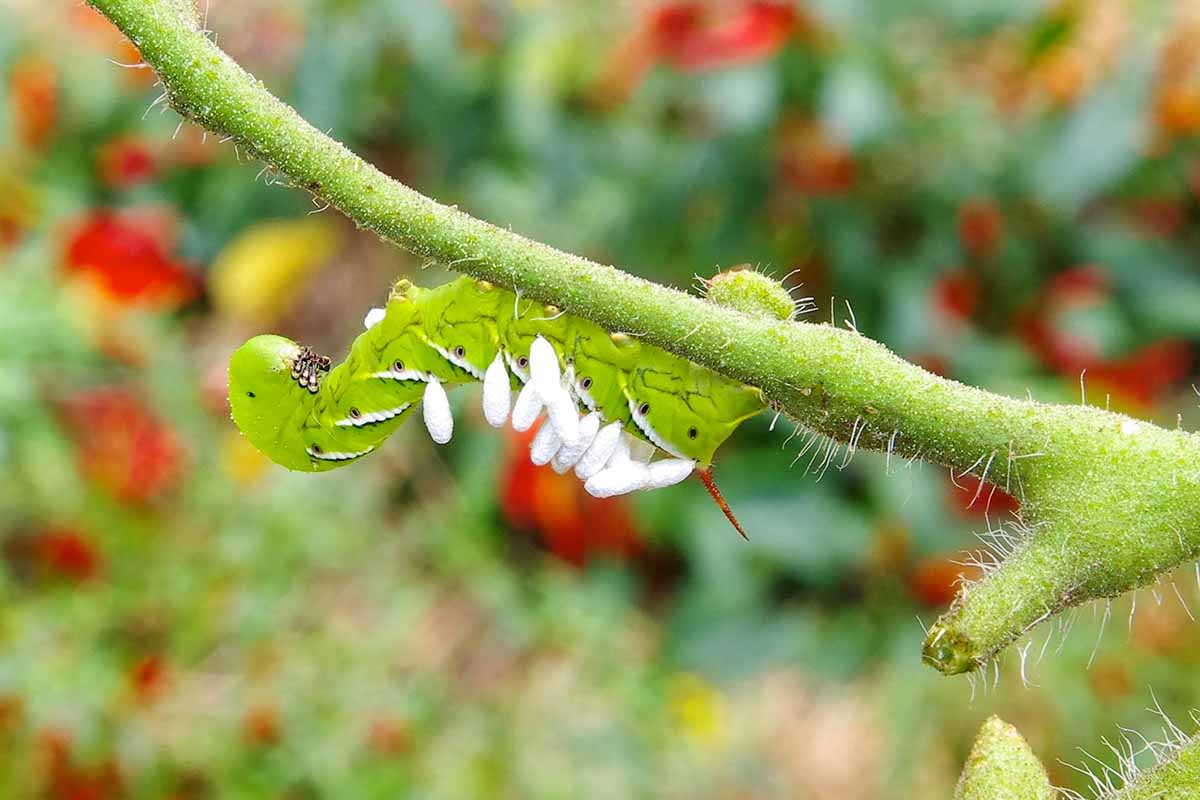
The most important one to watch for, however, is Cotesia congregata. If you see larvae with white rice-like protrusions on the back of a caterpillar, don’t pick it.
Rather, leave it so the parasites can hatch and continue preying on more caterpillars that are chewing on your tomatoes.
Organic Pesticides
There are a few pesticide options for home gardeners but their use is often unnecessary, thanks to the bevy of biological, cultural, and physical options available.
Spinosad products, such as Monterey Garden Insect Spray available at Arbico Organics, can be applied to the plant can help control the larvae. They must ingest the toxin for it to work.
Similarly, Bacillus thuringiensis var. kurstaki, works on young caterpillars if ingested.
You can find Monterey Bt at Arbico Organics as well.
Chemical Pesticide Control
Using chemical pesticides is a very unnecessary and harmful option, killing many of the beneficial insects you want to have in your garden to control tomato hornworms and other pests such as aphids.
If you absolutely need a one-time treatment, permethrin, bifenthrin, or carbaryl, among others, are effective and deadly.
Unicorn Worm
These caterpillars have a lot of bulk to feed, so it’s no wonder they can defoliate your tomatoes with such gusto.

You can attack them by handpicking, leave it up to the natural enemies that will attack them for you, or apply a product that will preserve said beneficial insects. You know, the ones also dealing with the aphid issue every gardener seems to perpetually have. Just saying.
Whatever method you choose to use, keep the upper hand on these interesting, chubby insects by keeping your eyes peeled for them, or for evidence of their presence.
Have you ever spotted one of these gigantic, horned worms in your garden? And if they were decimating your beefsteaks, how did you deal with them? Let us know in the comments below!
While you’re at it, read more about growing and caring for tomato plants in these guides next:

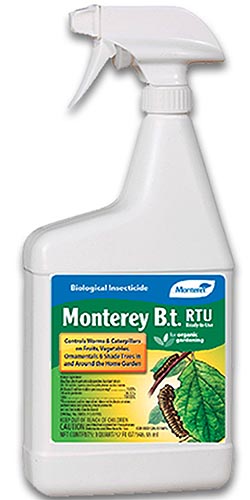



I use a black light flash light after dark to easily spot hornworms. They glow neon. Easy to get them under wraps.
Thanks for sharing Glena, sounds like an effective method!
A great hands-on tool for teaching science/biology metamorphosis. I have them every year on my Moon flower plant.
My daughter taught this to her 6th grade science class. She would stop by my house every morning to pick fresh leaves to feed them. The students absolutely loved it. (Of course my beautiful plant was stripped, but it was worth it!)
I believe mine was a tobacco hornworm.